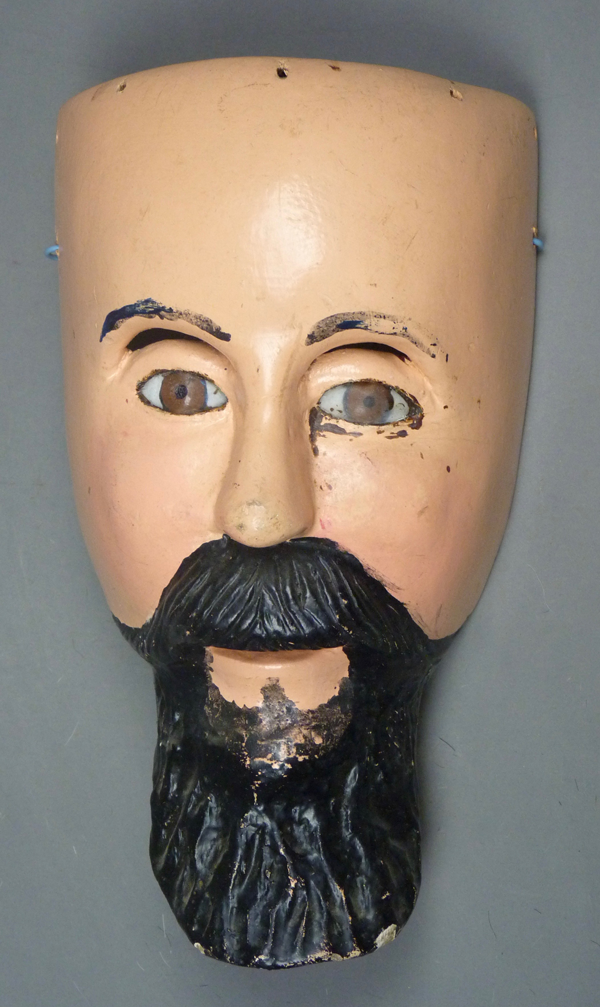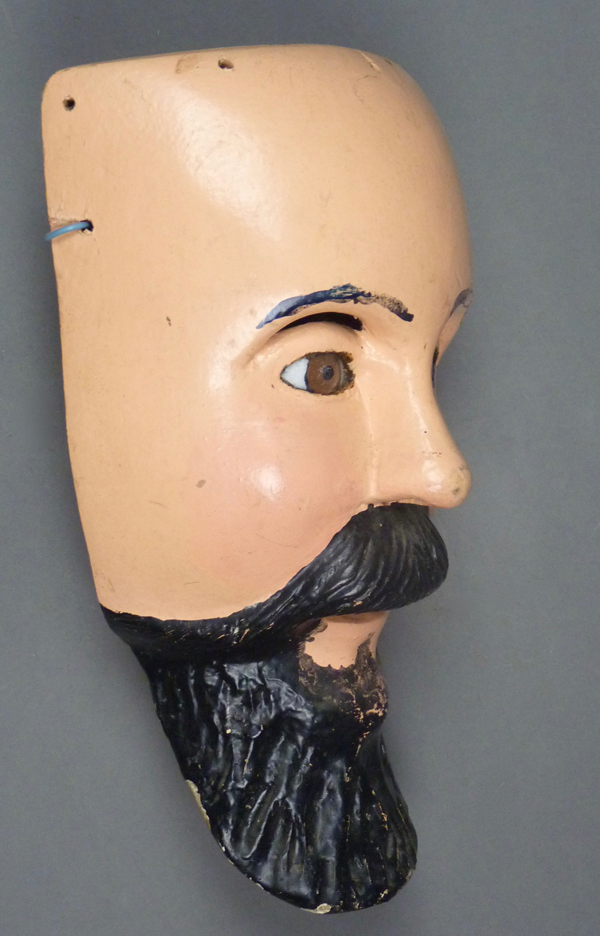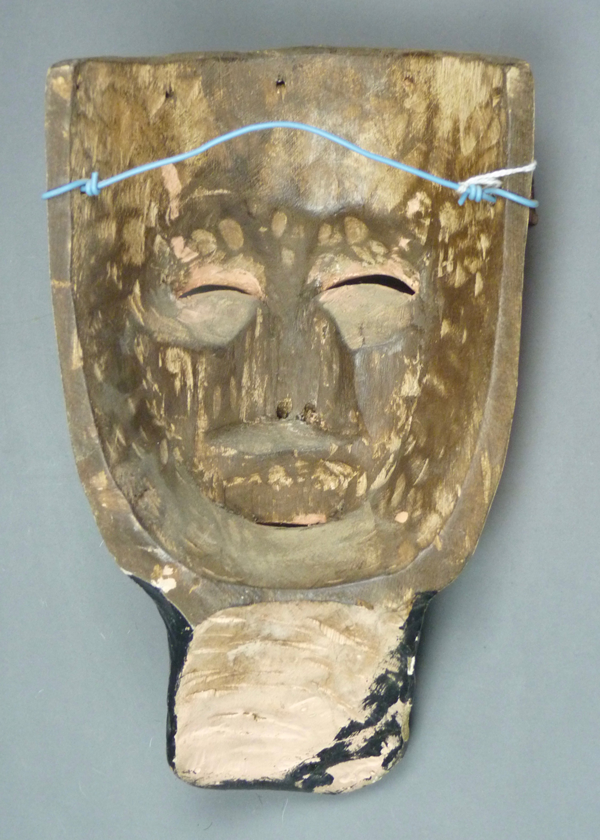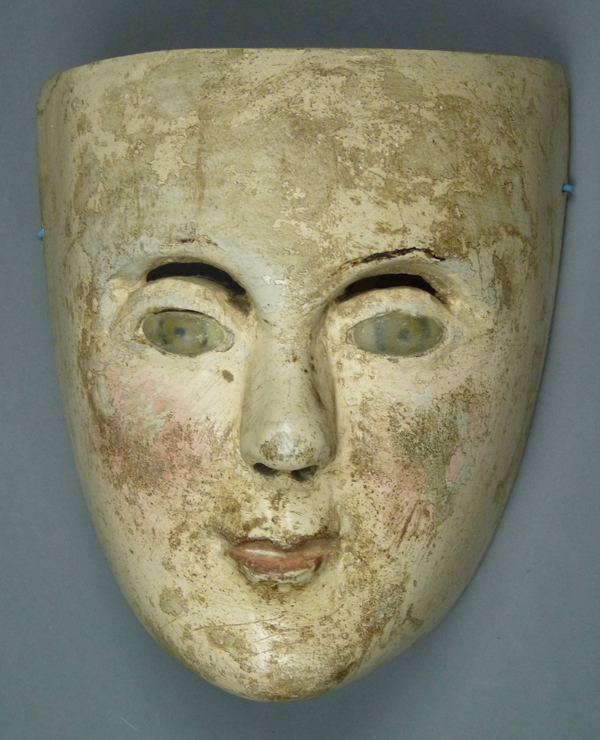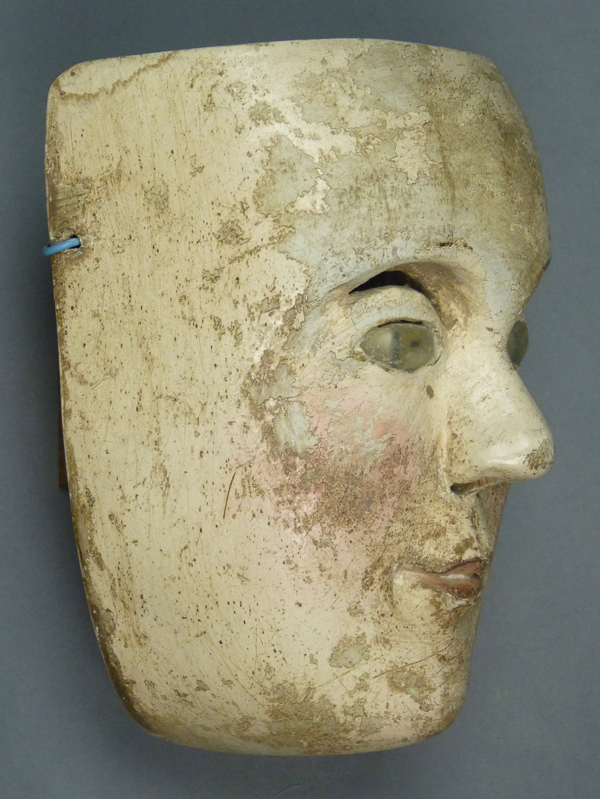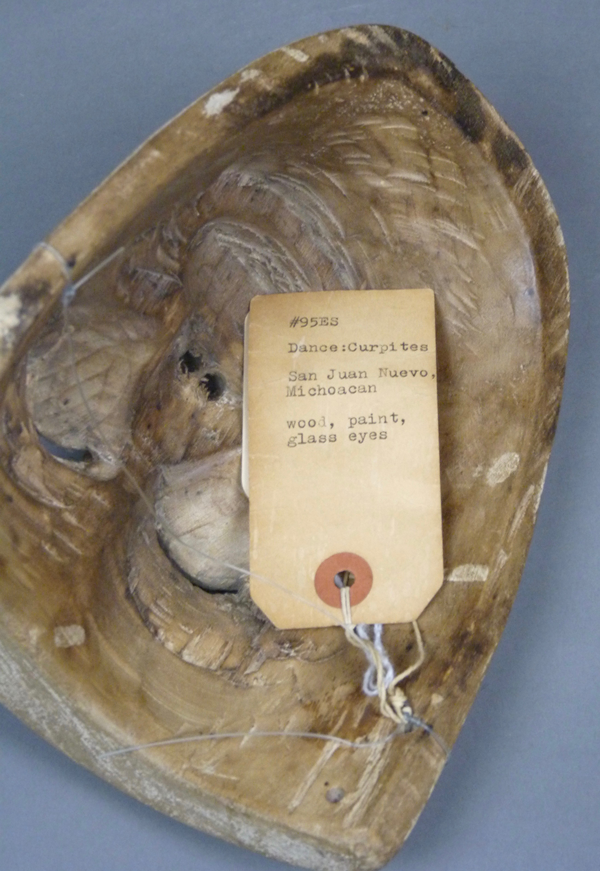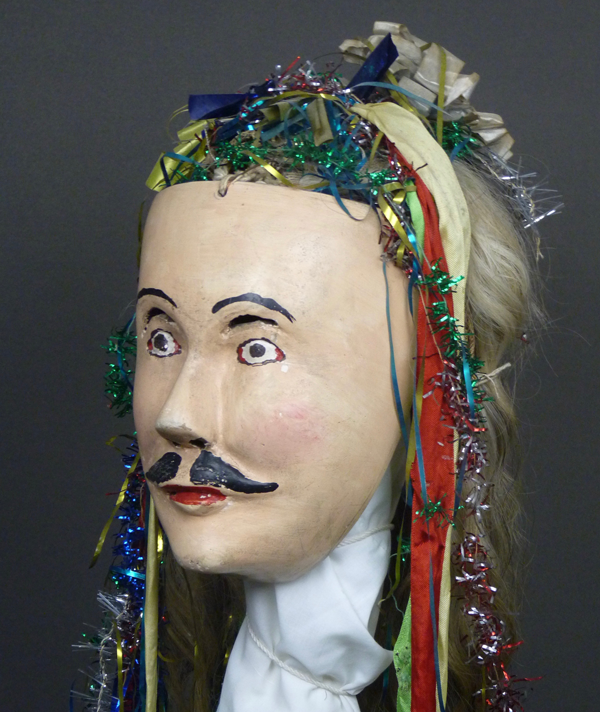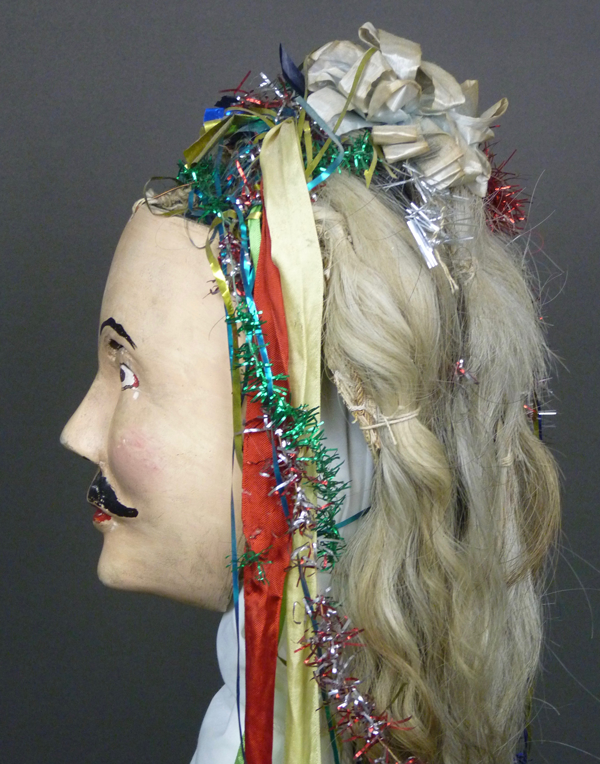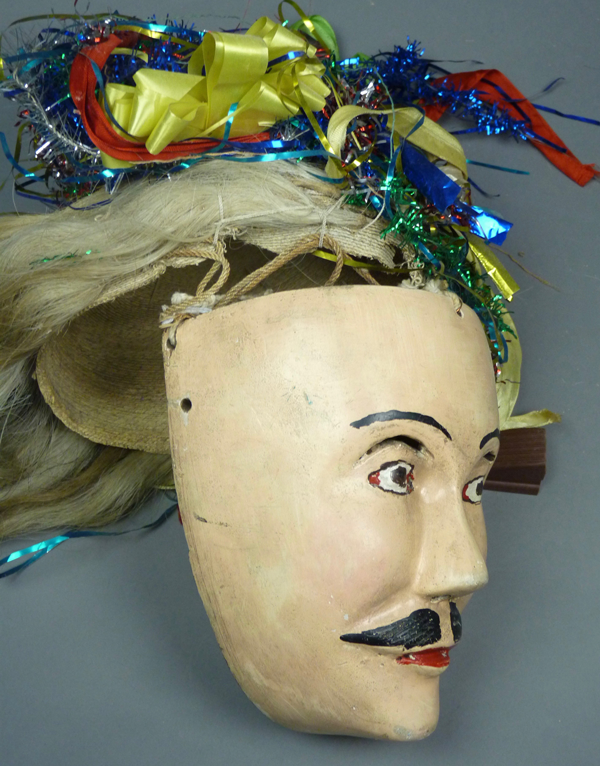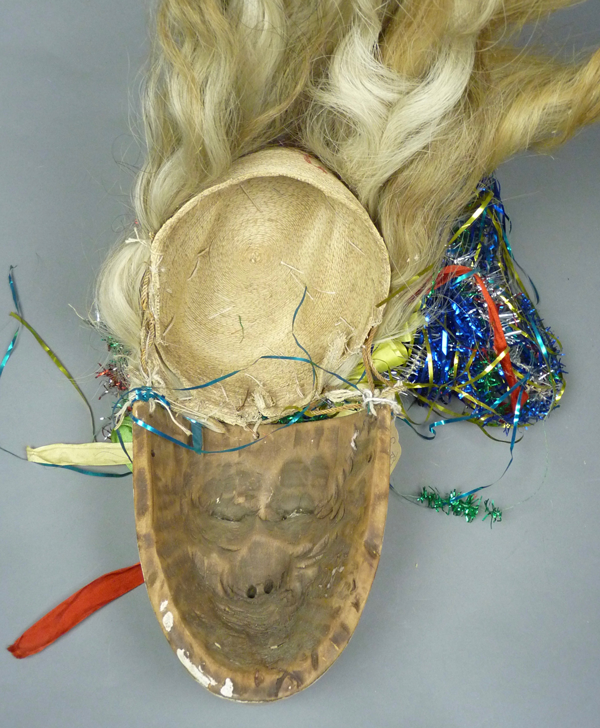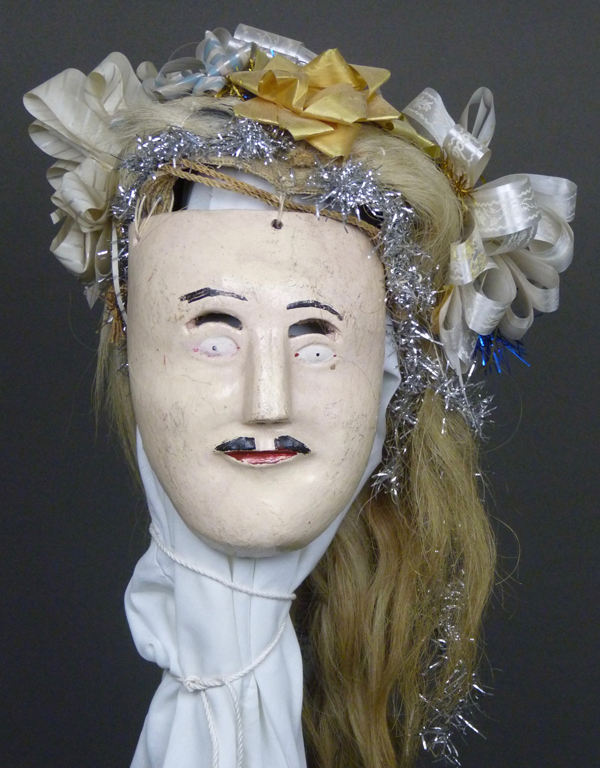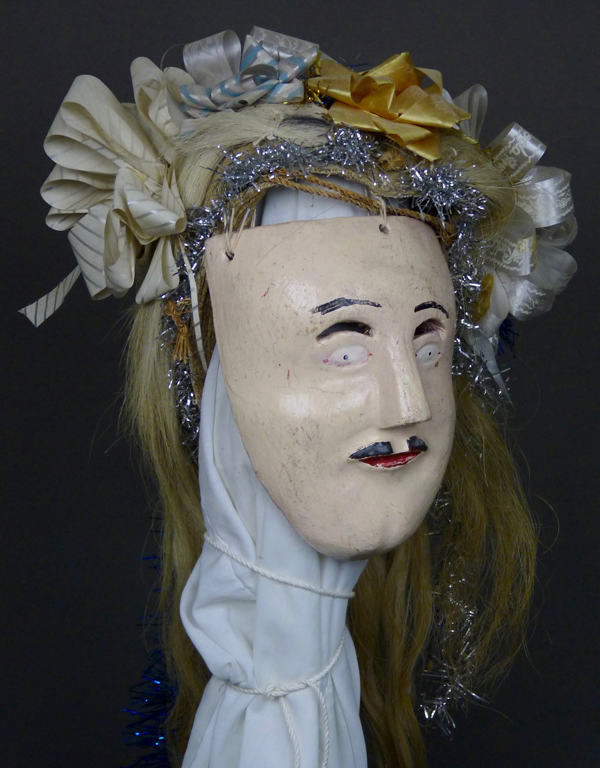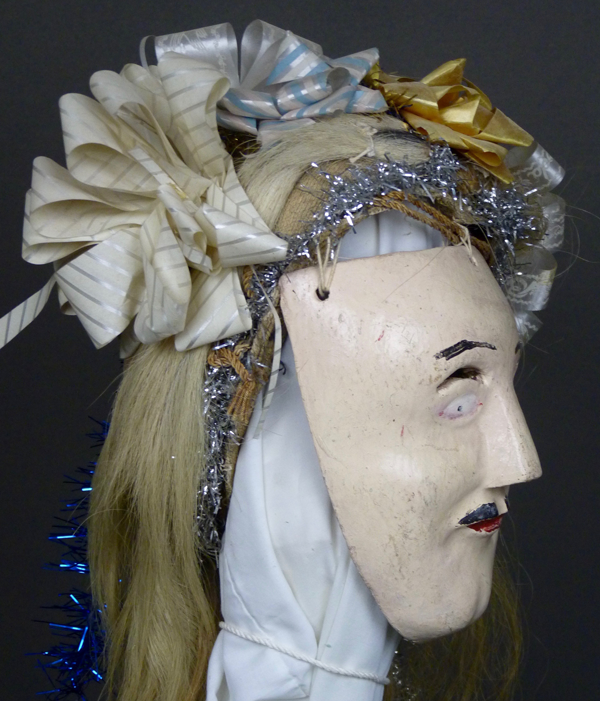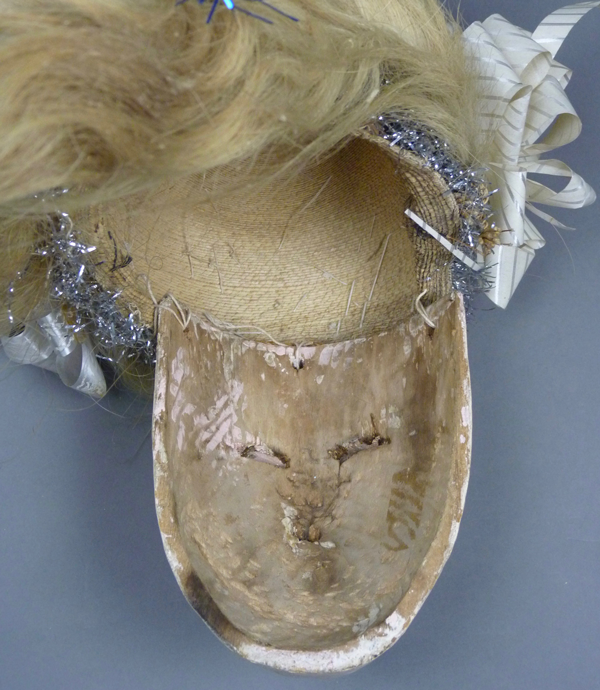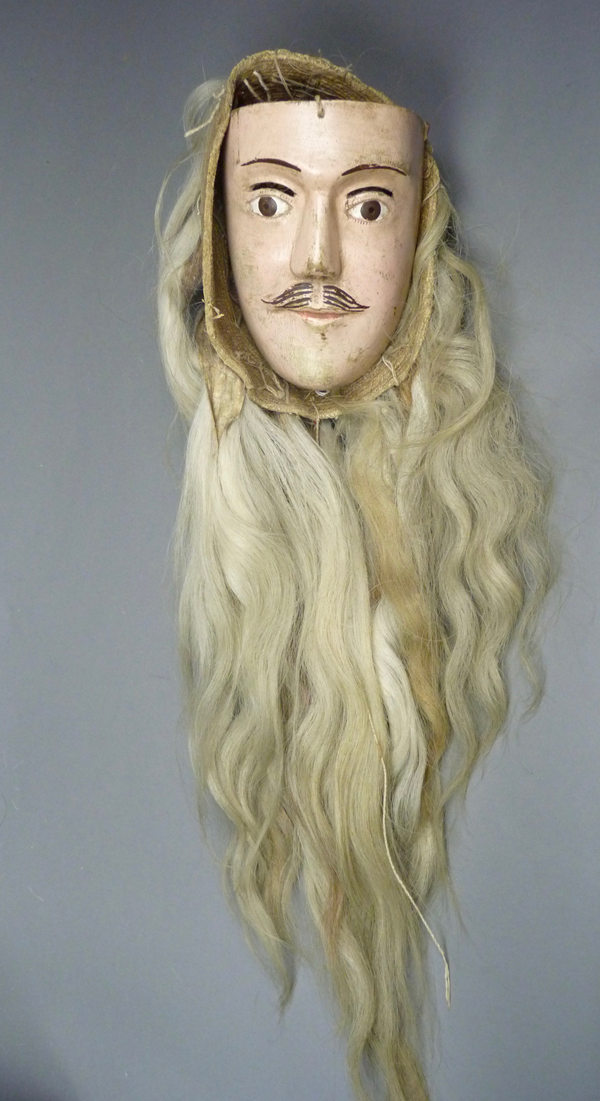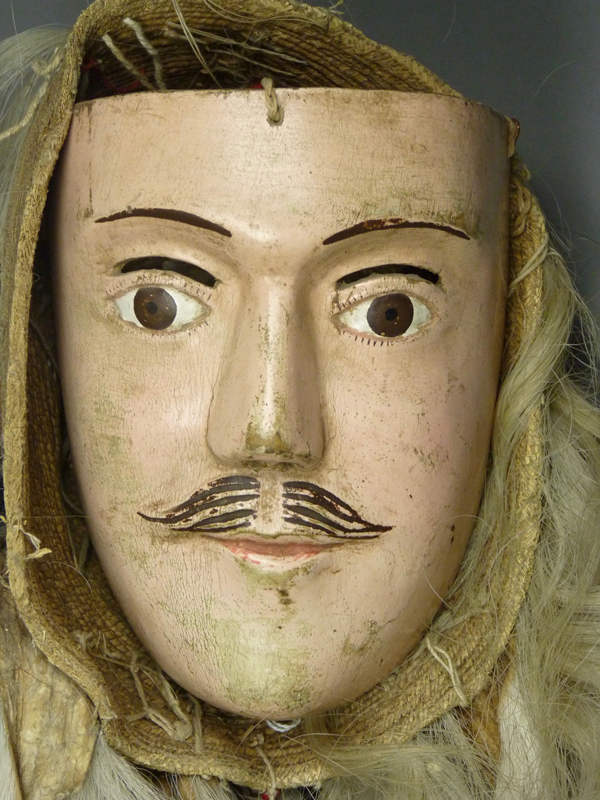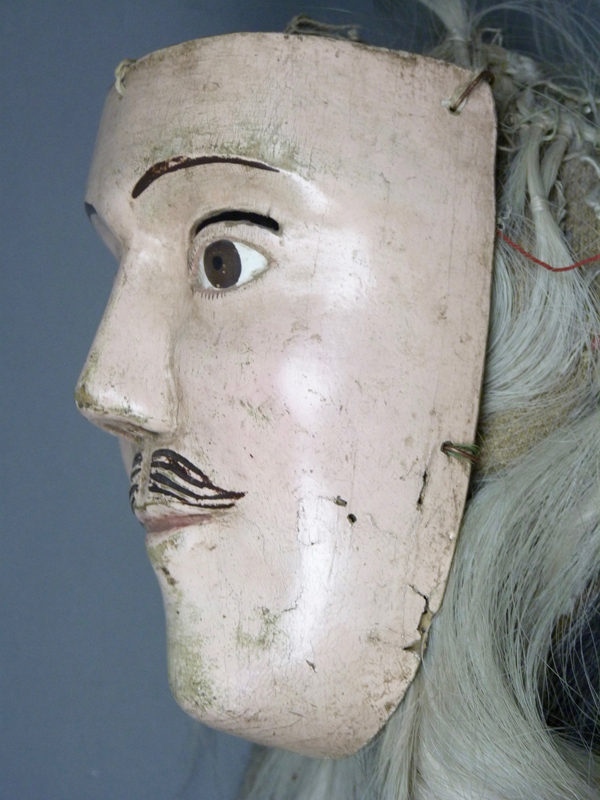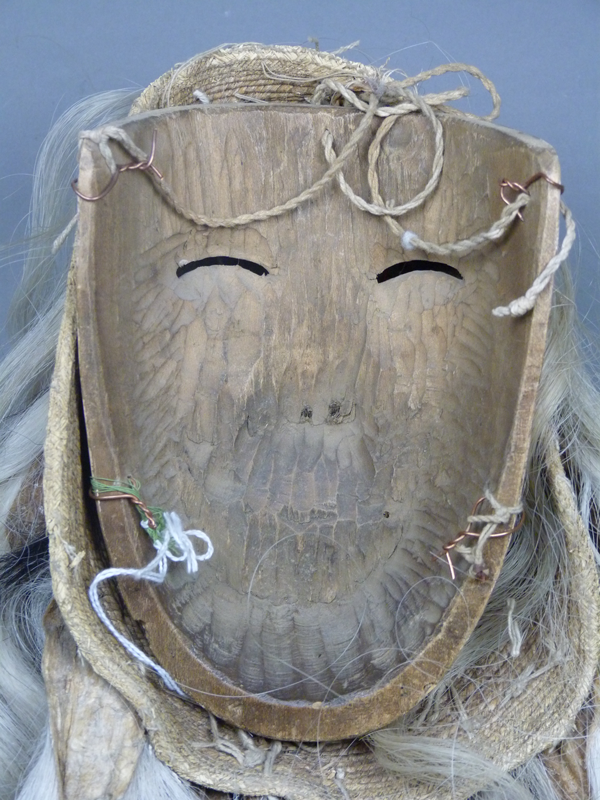This week I will show you some additional examples of the masks worn by Tarépiti, Maringuilla, and the Curpites in the area of Nuevo San Juan Parangaricutiro, Michoacán, also called San Juan Nuevo. I will begin with a beautiful old mask of Tarépiti, who is also known as Grandfather and San José, and which was collected in Michoacán by Sergio Roman Rodríguez of Mexico City in the 1990s. It is obviously in the style of Nuevo San Juan Parangaricutiro.
The headdress is missing but there are obvious holes around the forehead for the attachment of a headdress.
This mask has hand-painted glass eyes. It is very well carved. The Tarépiti mask measures 10 inches tall, 6 inches wide, and 3¼ inches deep.
The back is highly stained from long use.
The next mask was obviously worn by Maringuilla. This is probably the most beautiful worn Maringuilla mask that I have ever seen! I obtained it from the Cavin-Morris Gallery in 1995.
This mask has hand-made glass eyes, The finish is very worn. Note the cupid’s mouth.
This mask is 7¼ inches tall, 6 inches wide, and 3¼ inches deep.
The back is stained from considerable use.
This mask evidently came from an older collection, as this was not the standard Cavin-Morris style tag at the time of purchase. Note the obvious accuracy of this description, along with the omission of the character’s name—Maringuilla, or Maringuilla Bonita.
Three more Curpites masks follow, two with attached headdresses and a third that is accompanied by an unattached headdress of the usual style. I purchased this next mask from René Bustamante in 1993. It was said to have been collected in Apaseo, Michoacán, a place that I have been unable to locate. I did discover Apaseo El Alto and Apaseo El Grande, towns in the Mexican state of Guanajuato that lie about 200 miles north of Neuvo San Juan. As Estela Ogazón noted in Máscaras (1981, page 76), “Over time these masks have traveled widely; their owners have busied themselves taking the masks to celebrations in one place and another where the masks have been left behind, given away, or copied, some of the reasons for the existence of the masks sin curriculum which are presented here. When we find a mask characteristic of a certain region outside of that region, we are sometimes doubtful as to the explanation.”
This mask has carved eyes, along with the characteristic vision slits over the eyes.
The mustache is carved in low relief, but it is clear that a mustache was intended, because the cheeks are shaped to accommodate this mustache.
Note the typical rosy cheeks and the classic headdress.
This mask is 8 inches tall, 6¼ inches wide, and 3½ inches deep.
The back is stained from heavy use.
Here is a YouTube™video from Apaseo el Alto, which I include as an excellent illustration of processional singing in Mexico.
https://www.youtube.com/watch?v=hM2ajIk4dNQ
Next is a Curpite mask that is child-sized. It had been collected in Nuevo San Juan Parangaricutiro. I bought this mask from Robin and Barbara Cleaver in 1991.
The eyes are carved rather than made from glass.
Otherwise this is a typical Curpite mask.
In some cases, such as this mask, three holes around the top was all that seemed necessary to attach the headdress.
This mask is 6½ inches tall, 5 inches wide, and 2¼ inches deep.
The back has moderate staining from use.
I purchased the last of these masks in today’s post from Robin and Barbara Cleaver in March, 1988. Like most of the others, it too was reportedly collected in Nuevo San Juan Parangaricutiro, Michoacán.
The horse tail wig accompanied the mask but it was not attached.
The mustache was lightly carved and painted, leaving one to wonder whether this was yet another Maringuilla that had been converted to a Curpite (see last week’s post). The delicately carved cupid’s mouth supports this theory.
This mask is 7½ inches tall, 5¼ inches wide, and 3 inches deep.
The back is heavily stained.
Next week we will look at masks from the Curpites Dance by other carvers.

